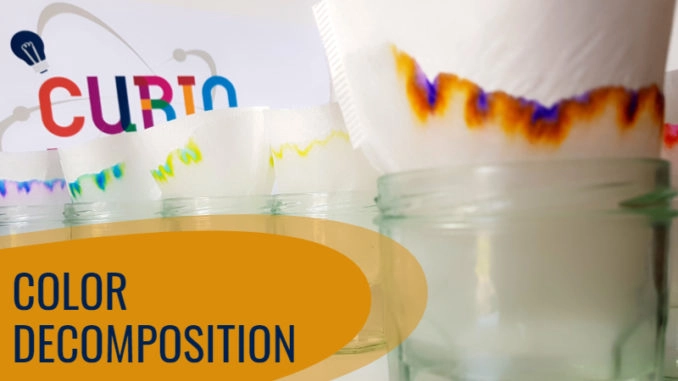
The color decomposition of your markers


The color decomposition to understand primary and secondary colors.
The primary colors are cyan, yellow, and magenta. Three shades from which all the others are derived. One way of discovering the color of the markers is to play with water, a coffee filter, and to use the principle of capillarity.
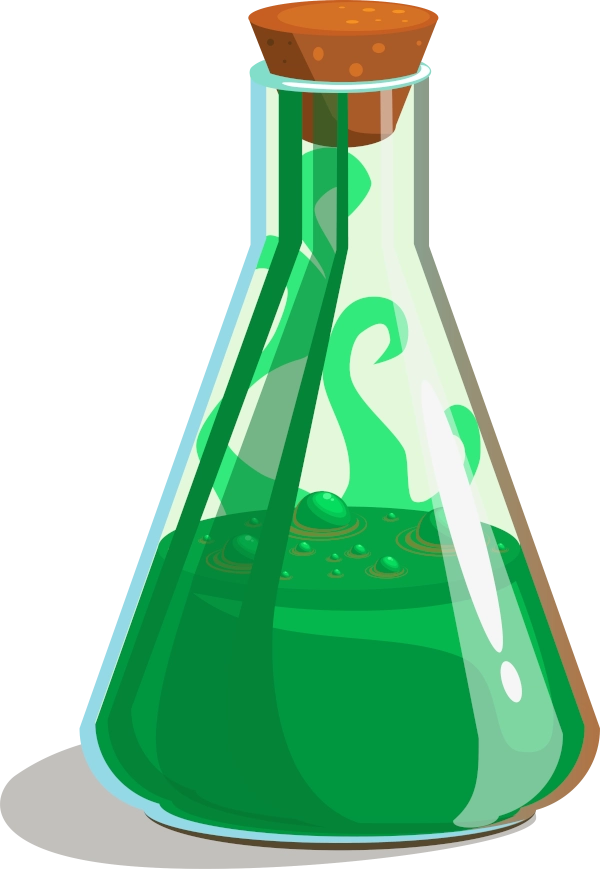


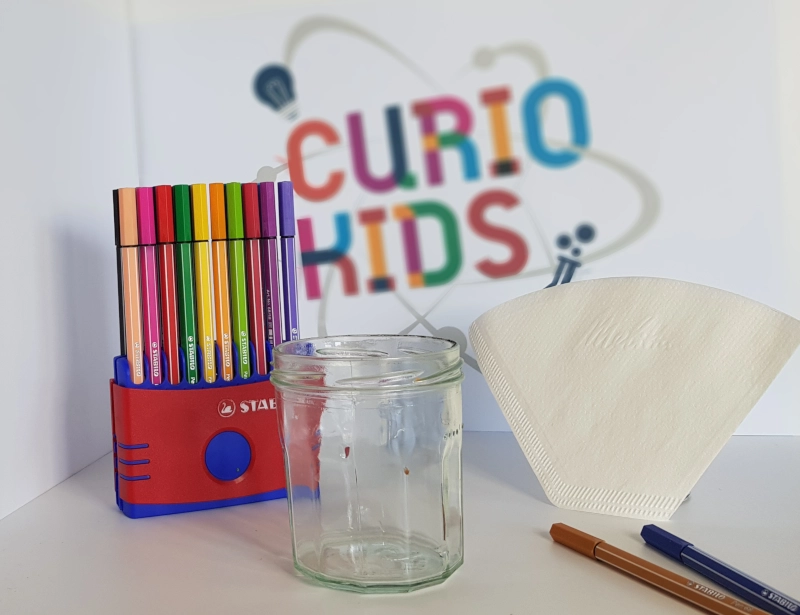

Gather all the requested materials
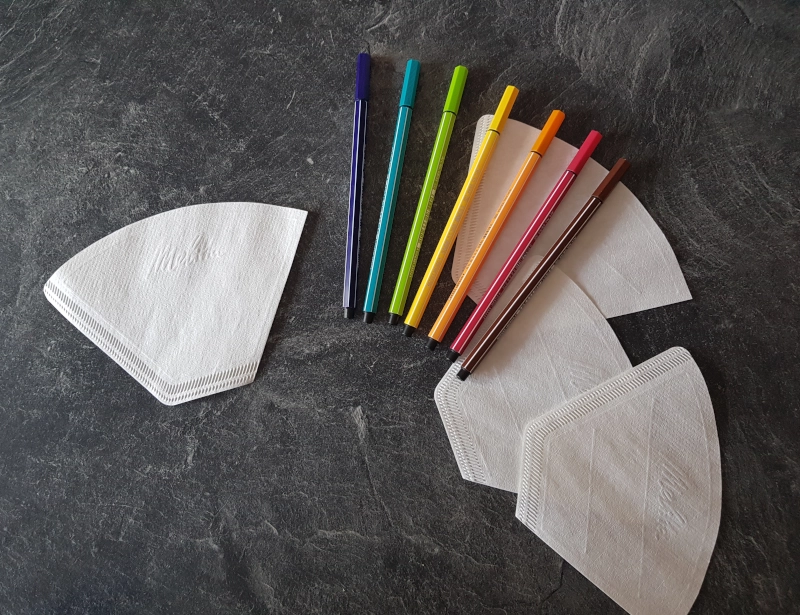

Choose different colors. Ideally, colors that are not blue, red and yellow.
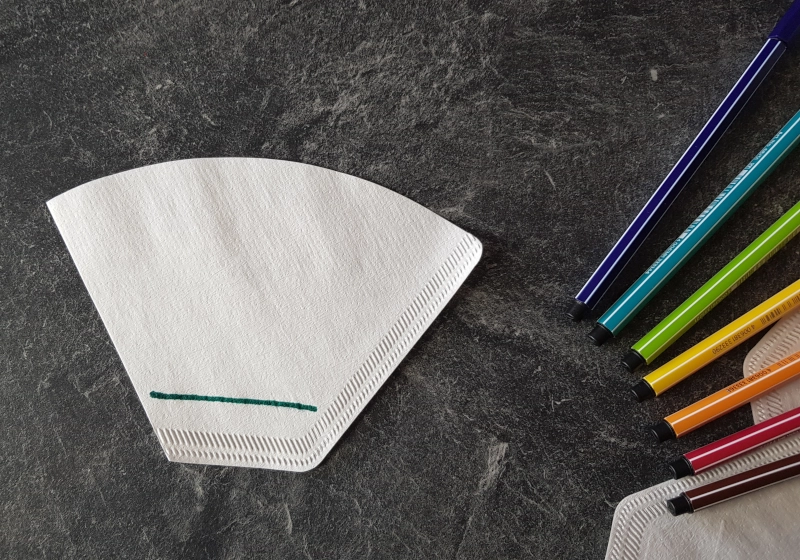
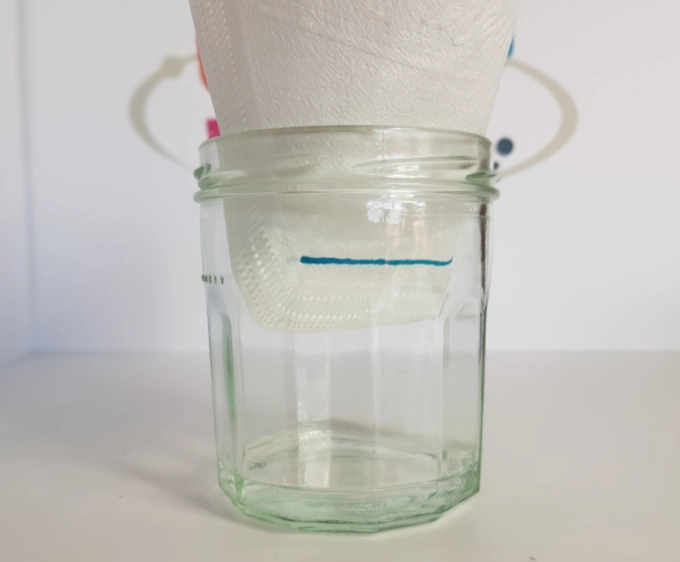

With a felt-tip pen, draw a line at 0.6 in from the edge.

In a glass jar, add water to a height of 0.2 in.
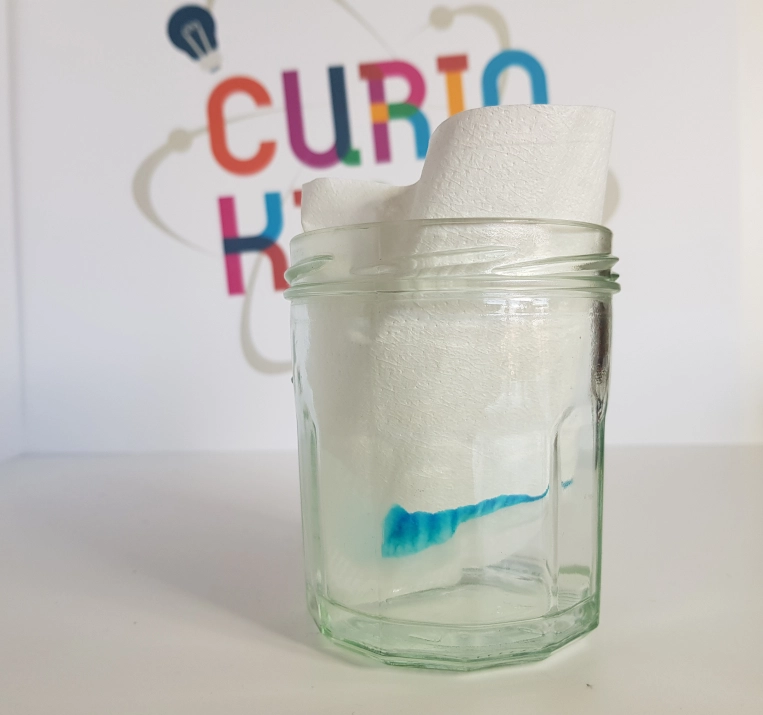
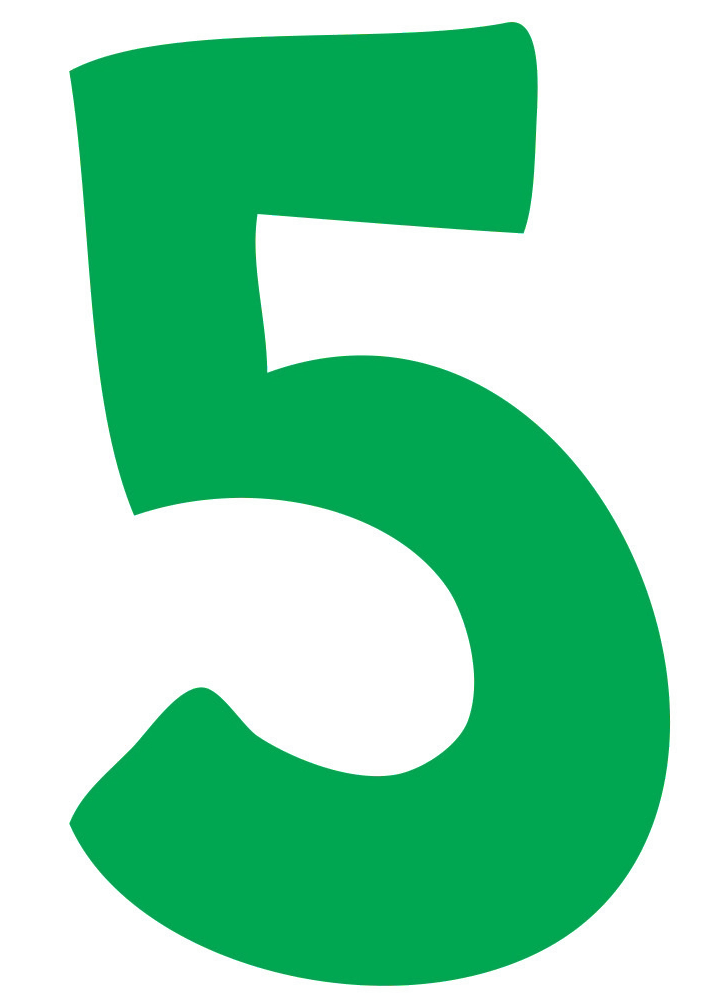
Insert the coffee filter so that the bottom of the filter is in water.


Now watch what’s going on. The color rises in the filter washed away by the water.
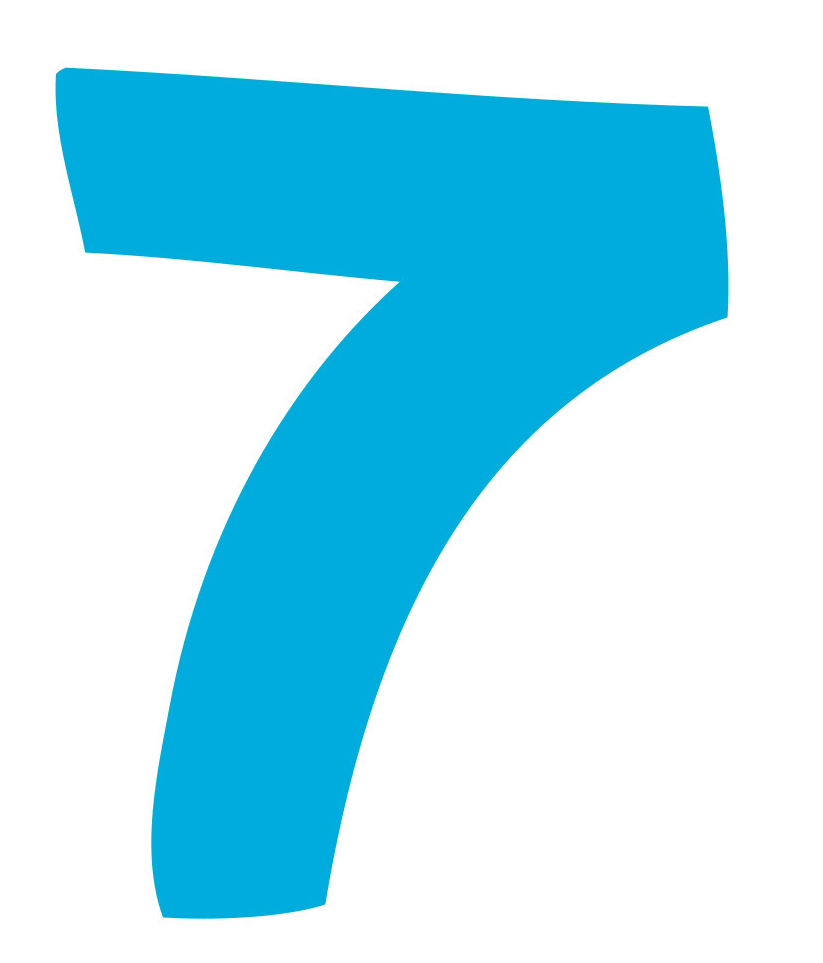
Over time, other colors appear. The different colors that make up that of the felt develop on the filter.
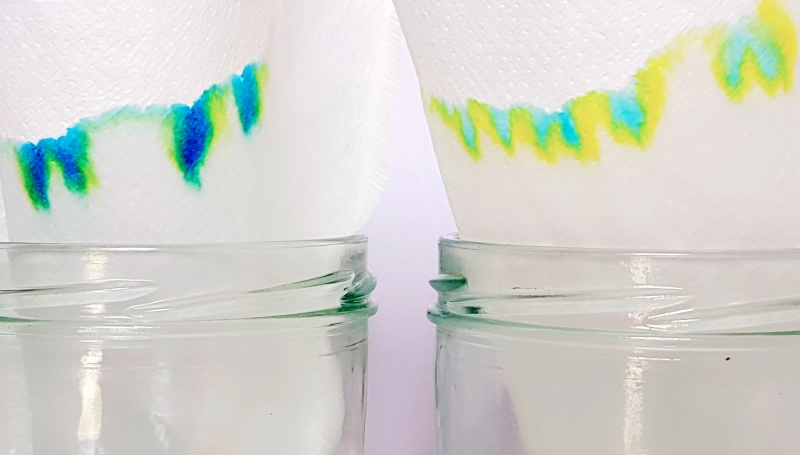
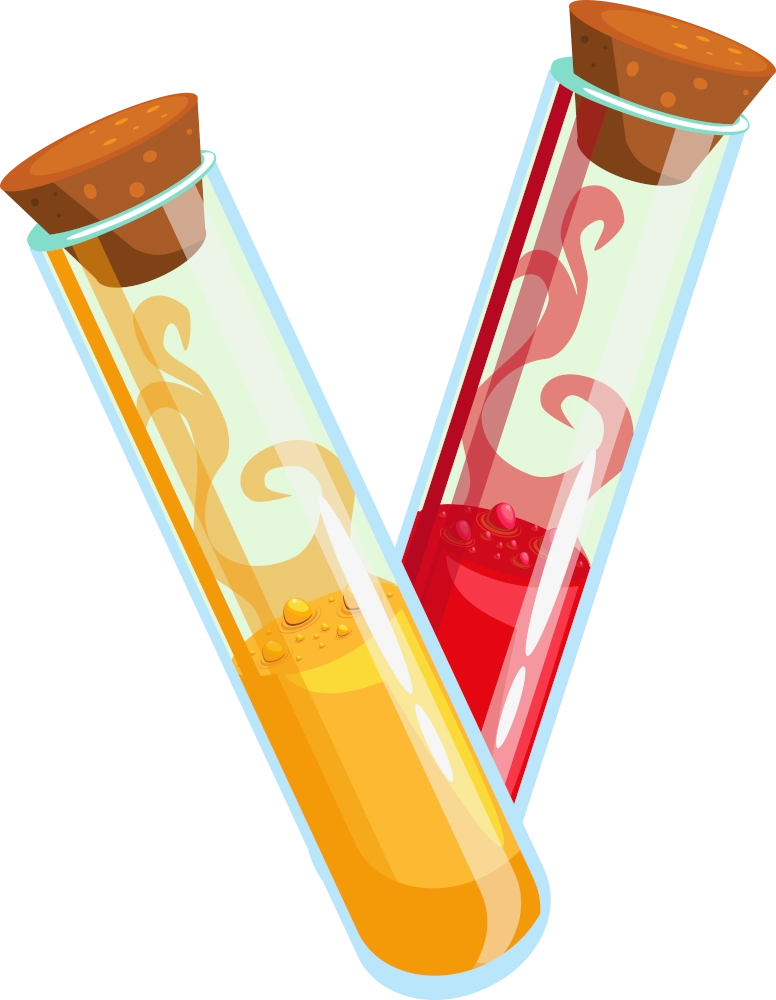
The ink in the felt-tip pen climbs into the coffee filter due to the capillary effect. As soon as the water meets the felt-tip ink, it takes the ink with it. The capillary effect is a force that opposes gravity thanks to the presence of a very narrow tube. This allows the colors to break down.
Primary and secondary colors ?
These are colors that cannot be obtained with mixtures. There are three primary colors: yellow, magenta, and cyan. With these, we create secondary colors. For example, mixing blue and yellow gives green.
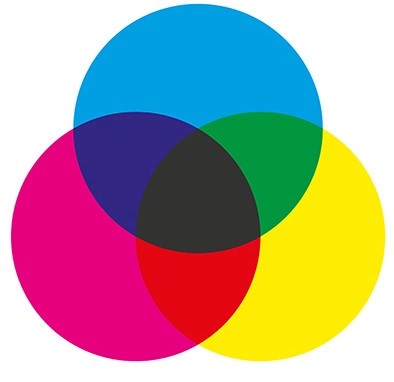
Test the color decomposition of black, brown, gray shades, and observe!
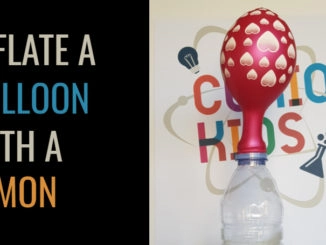
Have you noticed that some fruit juices are more acidic than others? To find out […]

Butter is obtained from cow’s milk. But did you know that you can prepare your […]

Did you know that plastic can also be produced from natural resources? The best example is milk! Milk proteins, huge molecules like those in plastics, can, under certain conditions, agglomerate to form a solid. […]
Copyright © 2023 | CurioKids.net - All rights reserved